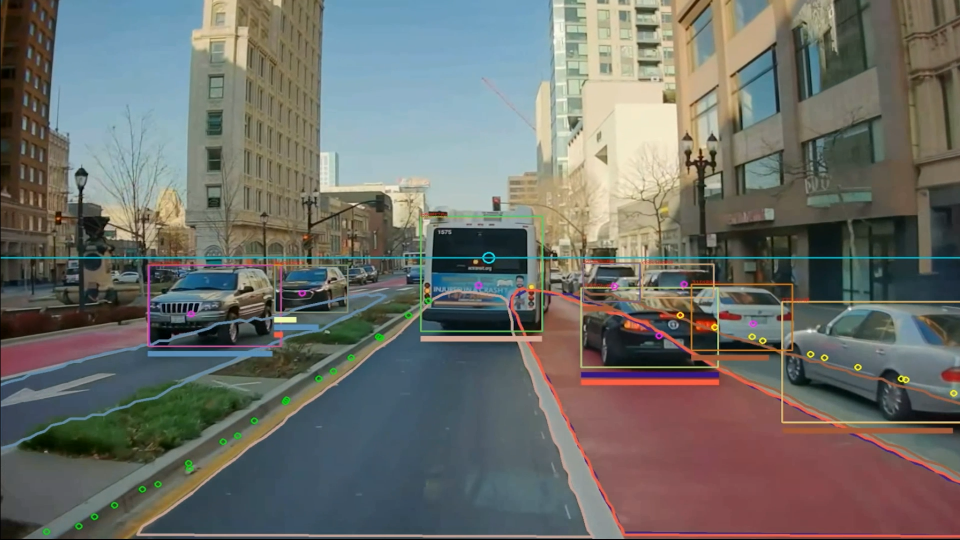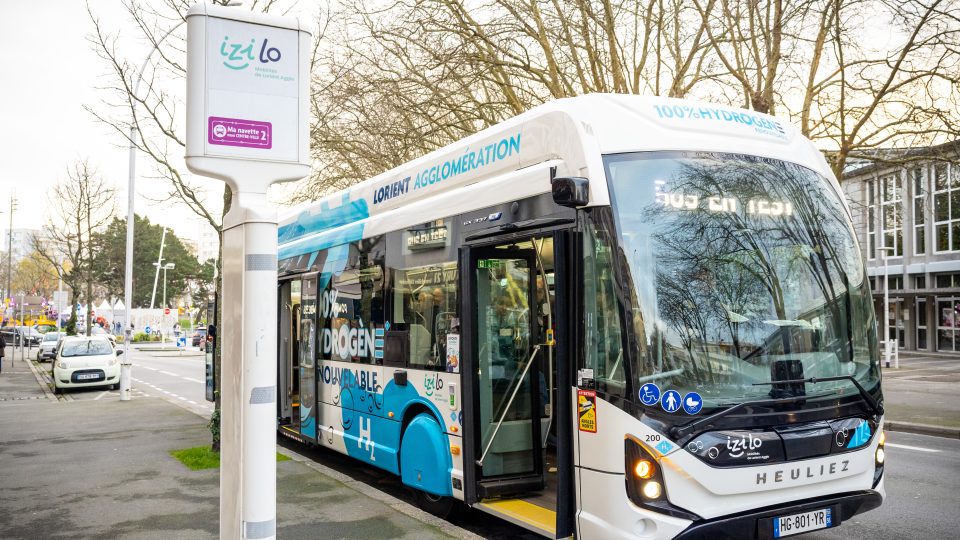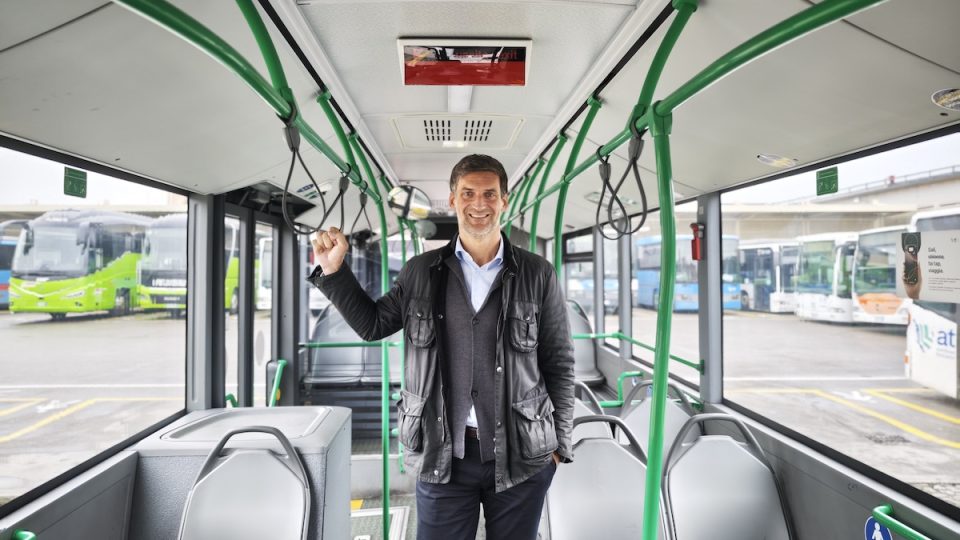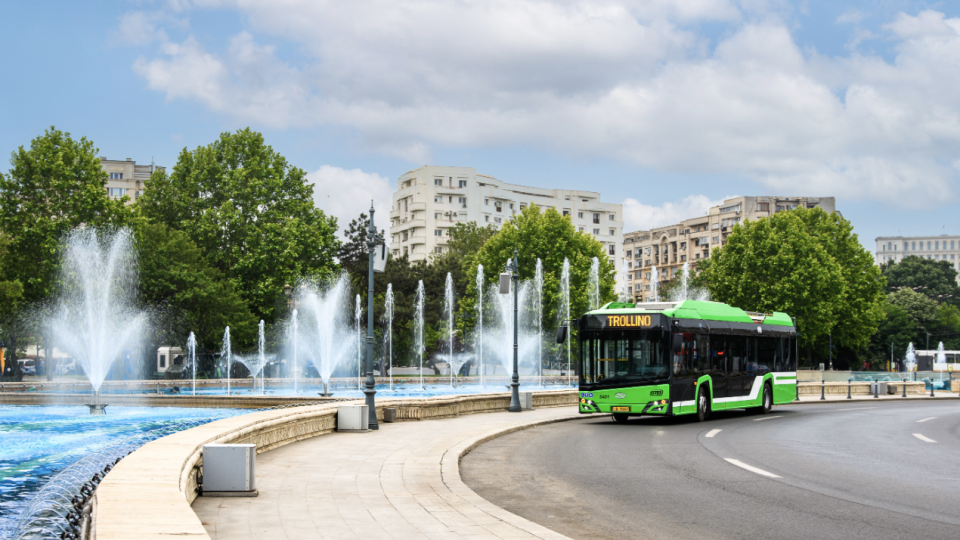Test-driving the Mercedes eCitaro G fuel cell
When it comes to electric vehicles, one of the key issues is range, which is the biggest point of vulnerability to date. For a 18m articulated vehicle that can weigh up to 30 tonnes and carry almost 130 passengers, the demand for power becomes quite significant and mileage is essential for being able to complete […]

When it comes to electric vehicles, one of the key issues is range, which is the biggest point of vulnerability to date.
For a 18m articulated vehicle that can weigh up to 30 tonnes and carry almost 130 passengers, the demand for power becomes quite significant and mileage is essential for being able to complete a day’s service. With this in mind, Daimler Buses offers from 2023 the Mercedes eCitaro G fuel cell.
This article was published on the
May 2024 issue of Sustainable Bus magazine.

Mercedes eCitaro G fuel cell: a Toyota’s heart
From a technological point of view, the base remains that of the eCitaro, with a modular set of NMC3 lithium ion batteries by BorgWarner for a total of 392 kWh. Six (with the possibility of adding a seventh as an option) hydrogen cylinders (5 kg capacity each) are installed to ‘feed’ the fuel cell module, capable of generating a maximum power output of 60 kW; the combination of the two technologies makes it possible to extend the range to 400 km under normal conditions.
Inside the fuel cell, as is well known, an exothermic reaction takes place between hydrogen and oxygen that produces water as an end product, thus generating energy.
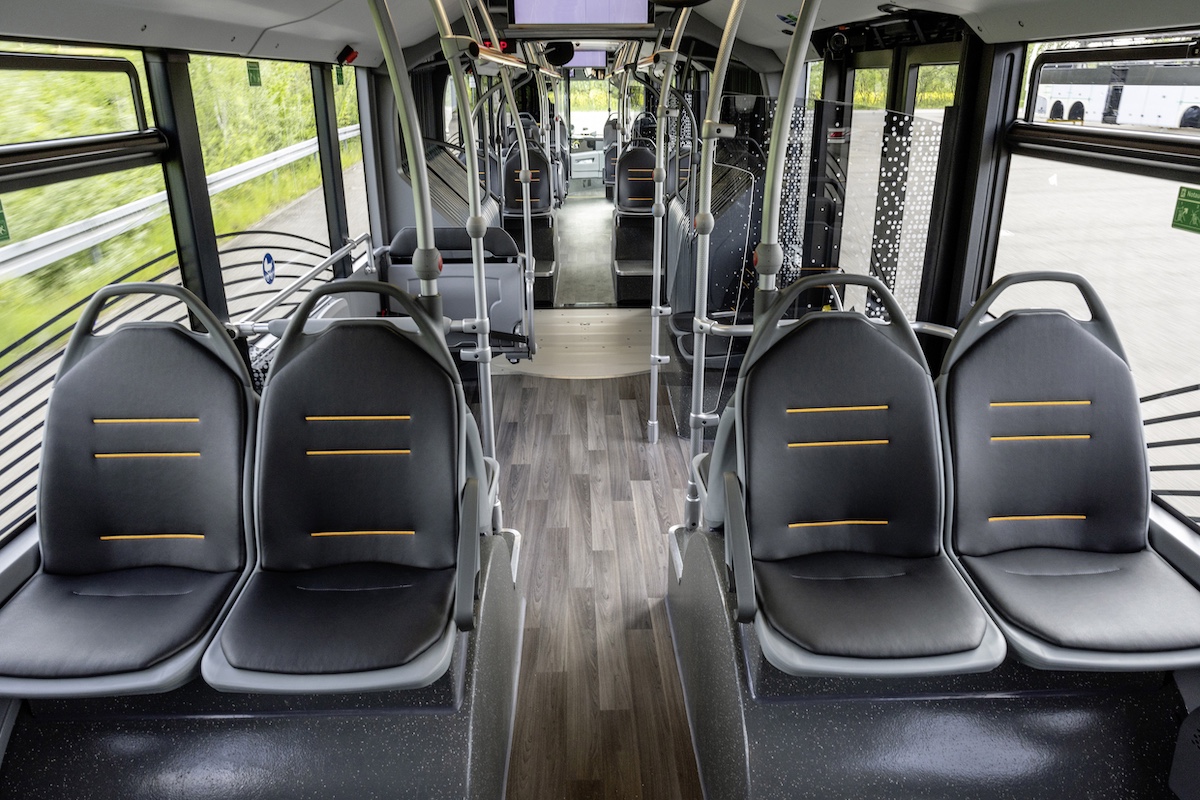
The fuel cell, manufactured by Toyota, is sized for heavy-duty use and designed for maximum efficiency. In particular, it is optimised to work between 20 and 30 kW and in a voltage range between 400 and 750 V. Under these conditions, with relatively low hydrogen consumption, the expected service life is around 40,000 hours.
When it comes to hydrogen, the concern is always transport safety. In this case, the cylinders are type 4, consisting of a plastic inner container and a carbon-fibre outer casing that combines very high strength characteristics with low weight and long service life. Hydrogen refueling takes place only on the right side of the vehicle, at the height of the second axle, via a specific nozzle. Refueling time is approximately 10 minutes for the single bus. For the articulated bus, it is slightly longer due to the larger cylinder capacity.

Battery technology on the Mercedes eCitaro G fuel cell?
The heat generated inside the cell is then used, in the winter, to heat the interior of the bus and to manage the NMC3 battery temperature.
The batteries were launched last year and are still supplied by the historical partner Akasol (which, in the meantime, was acquired by the BorgWarner group). They are characterized by the liquid electrolyte and graphite anode, and now have a compact cylindrical shape: each cell has a diameter of only 21 mm and a height of 70 mm, which is in fact an increase in energy density in the order of 50 percent compared to the previous polygonal structure cells. One module consists of 600 cells, 9 modules make up a battery pack (total of 5,400 cells) with a nominal capacity of 98 kWh.
The battery equipment is modular and scalable; on the articulated version, it is possible to mount three or four packs alternatively. The traction of the eCitaro G is on the centre and rear axles, and it is entrusted to the now customary ZF AxTrax axle. The axle, combined with the motors on the hubs, allows a power output of 141 kW and torque of around 11,000 Nm for each drive wheel.

This is achieved thanks to a favourable multiplication ratio from the 494 Nm delivered by the three-phase asynchronous motors. The batteries, with a maximum charging power of 150 kW, can be recharged on both sides, at front wheel height. It is possible to have an additional socket at the front or rear. The safety features of the new eCitaro G fuel cell include, besides the usual ones, the Preventive Brake Assist (PBA) technology, specifically designed to mitigate stress on standing passengers, and the Sideguard Assist, which is aimed at protecting pedestrians and cyclists in the blind spot during turns and lane changes. In view of the significant weight carried on the roof, the vehicle is equipped with a roll and pitch control system as part of its standard equipment.

Mercedes eCitaro G fuel cell: DRIVING FEELINGS
Testing an eCitaro G fuel cell on the test track is an exciting experience. The differences compared to an eCitaro are minimal, as is the configuration of the driver’s seat, which is ergonomic and comfortable, and features one more indicator than the corresponding electric version: the hydrogen level in the tanks, which is indicated in percentage fill. Striking is the brightness of the passenger compartment, both in the driver’s seat and in the passenger area. This feature was already evident in the first generations of the Citaro (which is now more than twenty years old), but it has been further improved without detriment to the robustness of the structure. From a vehicle with the torque and power features of the eCitaro, one expects a hard-to-manage sprint and tends to accelerate with caution; however, the performance delivery is gradual even with a more casual action on the pedal.
As you take the first bend at speed, you start feeling the heavier weight on the top: as you enter the curved section, you can distinctly feel the shift in the centre of gravity, with a consequent onset of roll. But the rolling control systems immediately come into play and the vehicle seems to forgive even some excesses when approaching the turn. Naturally, this triggers a kind of challenge that is repeated on the next turn, which this time is made more demanding by a slightly sloping approach: an excellent way of testing the systems that help maintain the stability of the articulated bus. Here too, a test passed with flying colours, as our eCitaro stays right on track. No abnormal movement from the rear section either, which, indeed, seems to hold the road even better than the front section. Having satisfied our curiosity about the bus’ behaviour at the limit, when driving in more ordinary conditions its brio and lightness almost make one forget that it is still an 18-metre, almost 30-tonne vehicle. Weight doesn’t seem to be a problem when it comes to braking: the regenerative system is a great help in this respect, allowing you to drive along the track at speeds that are objectively not low, using the brakes only on a few, very rare occasions and setting the brakes to slow down in advance, just lifting your foot off the accelerator. The actual braking is correctly designed in relation to the greater masses involved; being simple and pleasant to drive even in slow sections, the new eCitaro G easily disentangles itself in narrow passages. The stability experienced when driving is also confirmed in the passenger feelings: even when sitting on the seats at the back, the stresses are absolutely bearable and not comparable with those of a traditional articulated, albeit in decidedly more demanding travel conditions.

